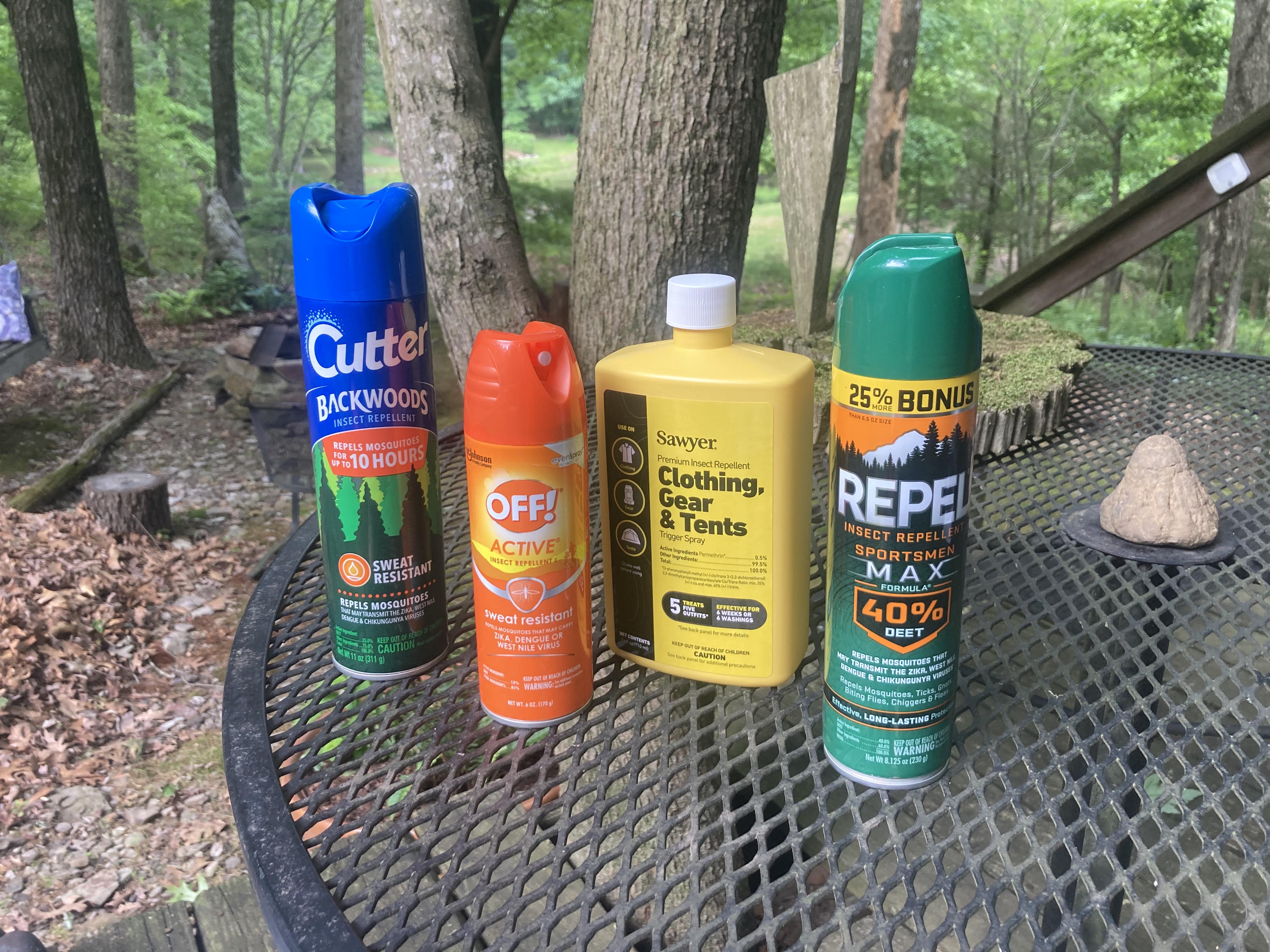Insect Repellents
Contact
University of Arkansas System Division of Agriculture
Cooperative Extension Service
2301 S. University Ave.
Little Rock, AR 72204

Insect Repellents
Tis the season. Tick and mosquito season that is; that time of year when I stop traipsing through the woods because I hate ticks. Avoiding insect-transmitted diseases is important because they can have serious and sometimes long-lasting impacts. But even though I shy away from brushy places in the summer, it is almost impossible to completely avoid picking up an occasional tick.
Insect repellents come in three basic flavors with DEET, picaridin (icaridin), and permethrin leading the pack. Lots of other possible synthetic and folk remedies are around but these three chemistries make up most of the products offered. And they are the go-to compounds people use whose jobs require them to be in the brush during peak pest season.
An alarming fact is that the incidence of insect-borne diseases – almost exclusively from ticks and mosquitos – seems to double almost every decade. I’m not sure if this is because of more awareness and better testing procedures in the labs or because more people are venturing out of doors, but it is a real thing. In the old days, you would hear third-hand reports of someone getting one or the other of the tick fevers, but today I personally know (including myself) about a dozen people who have been laid low by one of these maladies.
DEET is the most common insect repellent and is found in over 100 different products. It was first used in 1944 as “bug juice” when American GIs were fighting in the jungles of Southeast Asia. Consumer products containing DEET became available in 1957. Chemically, DEET is related to the chemical giving black pepper its spicy flavor. It is available in spray concentrations from 15 percent active ingredient to 100 percent as a lotion but generally, the most effective concentrations are found to be between 20 and 40 percent active ingredient. It can be applied to skin or clothing with the incidence of dermatological reaction exceedingly rare. In normal usage – avoiding going into water or a lot of sweating – the products usually are effective for six to eight hours.
DEET does have some downsides. It is a bit stinky, somewhat oily when applied (except the newer “dry” formulations) and it damages plastic and some synthetic clothing. Last summer I marked up the case on my large portable battery by spraying for ticks inside my van. It acts as a solvent for some kinds of plastics, including sunglasses, watch faces and some clothing.
Picaridin, the name used in the United States but officially known as icaridin, was developed by the German Bayer Corporation in the 1980s and is slightly more effective than DEET because it lasts longer once applied. The compound is odorless, not oily and can remain effective for as long as 12 hours. It has been known to cause minor dermatological problems. Both DEET and Picaridin-containing products are approved for use on young children and pregnant women.
Permethrin – a synthetic pyrethrum insecticide – is approved as a 0.5 percent spray for treating clothes and gear. It is not approved for applying directly to the skin. Studies where socks and shoes were sprayed with permethrin and then allowed to dry showed that users had almost 75 percent fewer tick bites than those that received no treatment. Applications remain effective for six weeks or up to six washings. It is not recommended as a stand-alone treatment but in conjunction with one of the other repellents.
A host of natural products are marketed for use as insect repellents, but almost none of them have the approval of the Food and Drug Administration or the World Health Organization. They may work – at least kind of – but they have no real staying power. Pulverized garlic bulbs make an effective repellent but it is effective for less than an hour and then you need to reapply. Of course, you would also be protected from werewolves, so maybe it has a place as a part of a holistic repellent strategy.
How do they work? While this hasn’t been completely resolved, some evidence in one species of mosquito has found that the compounds bind to the receptor sites for detecting odors, making them scent-blind to the volatiles they normally zero in on when detecting a target.
For ticks, wearing light-colored clothes that are tucked into your socks helps you spot the creepy crawlers before they find a spot to attach themselves. Avoiding brushy and weedy spots, staying off game trails through the woods, and careful tick inspection after a foray into ticky places are all part of a good tick protection strategy.
